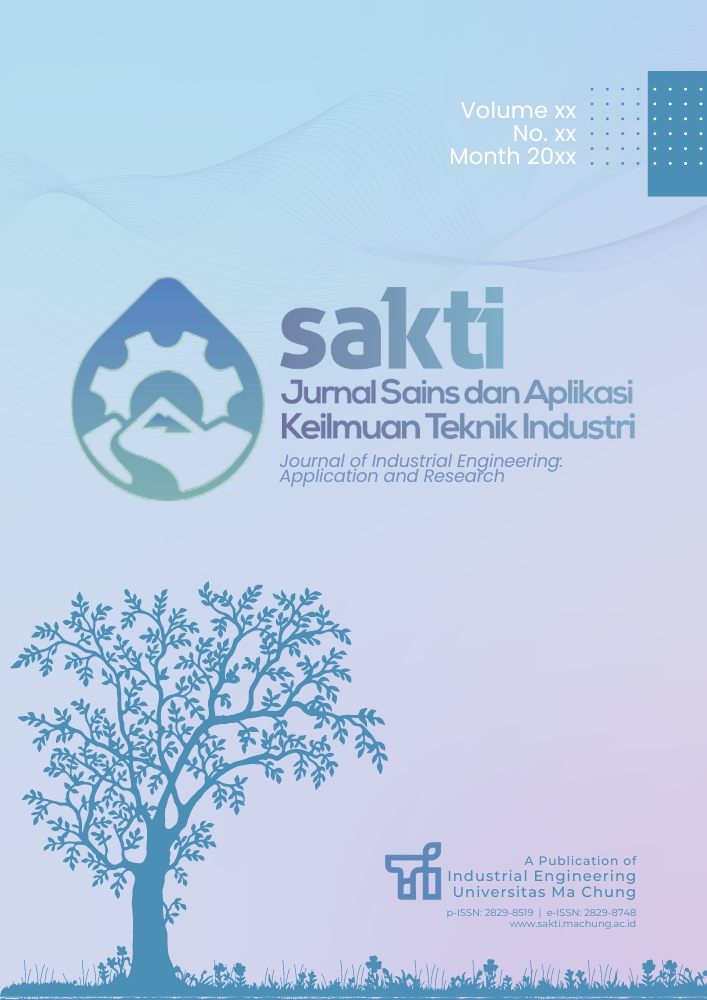Pengukuran Kinerja Supply Chain Management PT Otsuka Indonesia dengan Metode Supply Chain Operation Reference
DOI:
https://doi.org/10.33479/jtiumc.v3i2.48Keywords:
supply chain, performance, supply chain operation reference, analythical hierarchy process, failure mode and effect analysisAbstract
Supply chain management encompasses the study of efficiency and effectiveness in material, information, and monetary flow within the industrial sector. Assessing performance is pivotal in gauging a company's managerial capacities. At PT Otsuka Indonesia, research was undertaken during an internship, involving observations and interviews. Subsequently, Key Performance Indicators (KPIs) were formulated, covering aspects such as accuracy in raw material usage, precision in production level planning, frequency of production plan changes, source cycle time, finished product quality, make cycle time, delivery cycle time, precision in avoiding delays in finished goods delivery, and return of finished goods. Snorm de Boer normalization was applied to calculate the KPIs, generating performance results for each indicator. Determining the ultimate performance involved weighting via the Analytical Hierarchy Process (AHP) method, assigning significance levels to each KPI. Post data processing, it was evident that the finished product quality indicator had the lowest value. Consequently, improvement proposals were designed using the Failure Mode and Effects Analysis (FMEA) method. These proposals culminated in the development of warning sticker designs for machine cleaning, comprehensive Personal Protective Equipment (PPE) usage, and scales rechecking.
References
Bolstroff, P., & Rosenbaum, R. (2007). Supply Chain Excellence: A Handbook for Dramatic Improvement Using the SCOR Model (2nd ed.). New York: AMACOM-American Management Association.
Chamid, A. A., & Murti, A. C. (2017). Kombinasi Metode AHP dan TOPSIS pada Sistem Pendukung Keputusan. Prosiding SNATIF ke-4. Kudus: Universitas Maria Kudus.
Heizer, J., & Rander, B. (2011). Operation Management (10th ed.). New Jersey, Pearson.
Jebarus, F. (2001). Konsep Supply Chain Management: Impian Menarik dengan Segudang Tuntutan. Manajemen Usahawan Indonesia, 30(2), 3-12.
Immyawahyu, R. V., & Oktiarso, T. (2022). Manajemen Risiko Rantai Pasok Bahan Baku Fast Moving pada PT Inkor Bola Pasific Menggunakan Model Supply Chain Operation Reference dan Metode House of Risk. Jurnal Sains dan Aplikasi Keilmuan Teknik Industri (SAKTI), 2(1), 27-34. https://doi.org/10.33479/jtiumc.v2i1.23
Johnson, M., & Mena, C. (2008). Supply Chain Management for Servitised Product: A Multi-Industry Case Study. International Journal of Production Economics, 114(1), 27-39.
Pujawan, I. N., & Mahendrawathi. (2017). Supply Chain Management (3rd ed.). Yogyakarta: ANDI.
Saaty, T. L. (1994). How to Make a Decision: The Process of Analytical Hierarchy Process. Interfaces, 24(6), 19-43.
Ferbiani, E. T., & Oktiarso, T. (2022). Penentuan Kriteria Prioritas Pemilihan Supplier pada PT Inkor Bola Pacific dengan menggunakan Metode Fuzzy Analytic Hierarchy Process. Jurnal Sains dan Aplikasi Keilmuan Teknik Industri (SAKTI), 2(1), 35-42. https://doi.org/10.33479/jtiumc.v2i1.24
Trienekens, J. H., & Hvolby, H. H. (2000). Performance Measurement and Process. Pittsburgh: RWS Publications.
Wijaya, J., & Purnomo. (2021). Analisis Strategi Pemasaran pada UMKM Depot Glory dengan Menggunakan Metode Analytical Hierarchy Process (AHP). Jurnal Sains dan Aplikasi Keilmuan Teknik Industri (SAKTI), 1(2), 79-88. https://doi.org/10.33479/jtiumc.v1i2.11
Zaenab. (2017). Analisis Supply Chain Management (SCM) Terhadap Kinerja Perusahaan [Undergraduate theses, Universitas Hasanuddin]. Unhas Repository. https://repository.unhas.ac.id/id/eprint/17758/2/A21116008_skripsi_21-07-2022%201-2.pdf
Downloads
Published
How to Cite
Issue
Section
License
Copyright (c) 2023 Jurnal Sains dan Aplikasi Keilmuan Teknik Industri (SAKTI)

This work is licensed under a Creative Commons Attribution-NonCommercial-ShareAlike 4.0 International License.









